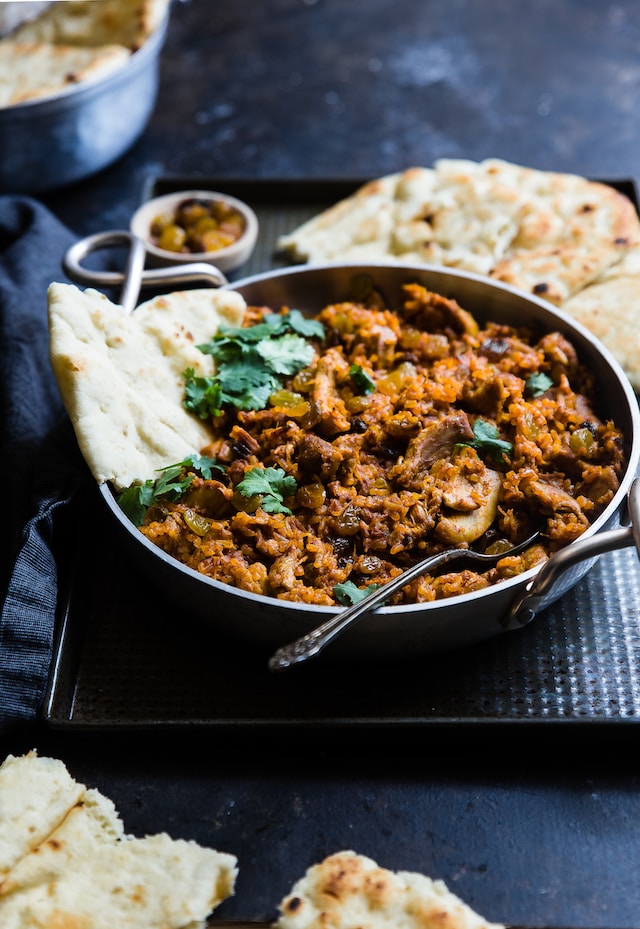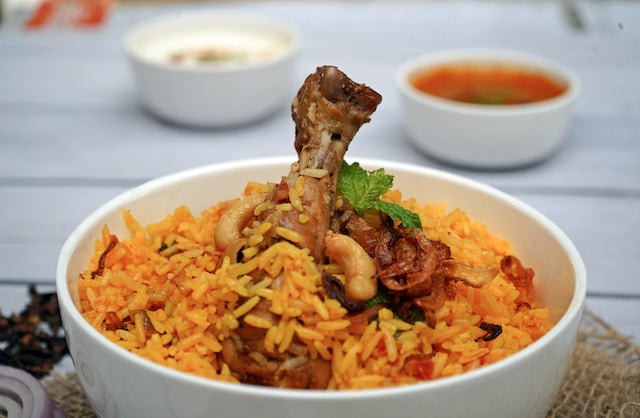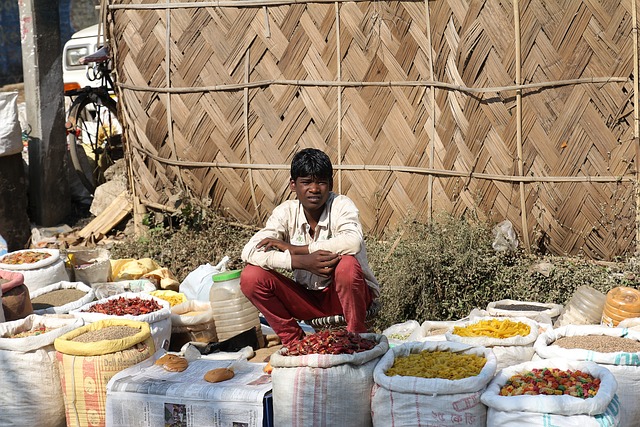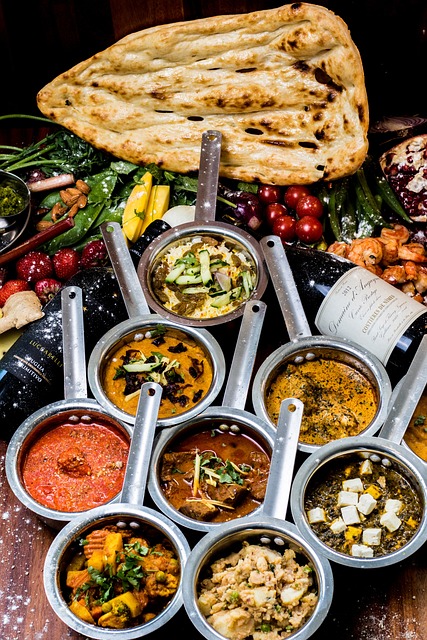
Indian cuisine is renowned for its rich and bold flavors, with a myriad of spices and herbs used to create the perfect balance of sweet, sour, spicy and salty tastes. Indian people have a love affair with food, with no meal ever feeling complete without a little spice and a bowl of rice.
From the fragrant biryanis of Hyderabad to the fiery vindaloos of Goa, each region in India has its own unique culinary style that reflects the culture, traditions and ingredients of the land. The diversity of Indian cuisine is truly unparalleled, with a never-ending list of mouth-watering dishes to suit every palate.
Take, for instance, the humble samosa. This savory triangular pastry, filled with spiced potatoes, has now become an international sensation. Whether it’s enjoyed with a cup of hot chai or as a quick snack on-the-go, the samosa has managed to find a place in the hearts and bellies of people worldwide.
Or, if you’re in the mood for something sweet, the ras malai is a popular dessert that you simply cannot resist. It consists of soft, creamy discs of cheese, soaked in a cardamom-infused syrup, and garnished with pistachios.
But, what truly sets Indian cuisine apart is the way in which it brings people together. Whether it’s at a lavish wedding feast or a humble family dinner, food is the glue that binds Indian families and communities. And, as I sat down to enjoy a steaming bowl of daal tadka and a plate of piping hot rotis, I couldn’t help but feel grateful for the rich culinary heritage of India.
Characteristics of Indian Cuisine
Indian cuisine is rich in flavor and aroma, with a complex range of spices and herbs used to create each dish. Some of the core spices used in Indian cuisine are turmeric, cumin, coriander, ginger, garlic, cinnamon, cardamom, and nutmeg. These spices not only add depth and flavor but also provide health benefits and aid in digestion.
Another characteristic of Indian cuisine is its use of dairy products. Milk, yogurt, and ghee (clarified butter) are commonly used in both sweet and savory dishes, adding richness and creaminess.

Indian cuisine also has a strong tradition of vegetarianism, with many dishes using lentils, beans, and vegetables as the main source of protein. However, meat dishes are also popular in certain regions, such as chicken tikka in the north or seafood curries in the coastal areas.
The concept of balance and harmony is also important in Indian cuisine, with each dish striving to achieve a balance of flavors such as sweet, sour, spicy, and salty.
This balance is achieved through the use of different spices and ingredients that complement each other.
Indian cuisine is known for its regional diversity, with each region having its own unique cuisine and cooking styles. The south is known for its dosas and idlis, while the east is famous for its sweets and desserts like rasgulla and sandesh.
Regional Varieties of Indian Cuisine
India is a diverse country with a rich culinary heritage that is reflected in its regional cuisines. Each region in India has its own unique culinary style, which is shaped by its geography, history, and cultural influences. Here are some of the distinct regional cuisines in India that are popular across the country.
North Indian Cuisine
North Indian cuisine is known for its rich and spicy dishes, which are primarily influenced by Mughal cuisine. Some of the popular North Indian dishes include butter chicken, chicken tikka masala, dal makhani, naan, and paneer dishes. The use of tandoor (clay oven) is widespread in North India, with many dishes being roasted or grilled in it.
South Indian Cuisine
South Indian cuisine is mostly vegetarian and is known for its light and healthy meals. Rice is a staple in South Indian cuisine and is often served with lentil-based dishes like sambar and rasam. Some of the popular South Indian dishes include dosas, idlis, vadas, and uttapams. Coconut, tamarind, and curry leaves are commonly used in South Indian dishes, imparting a distinct flavor to the food.
Bengali Cuisine
Bengali cuisine is known for its delicate balance of sweet and savory flavors. Seafood dishes are particularly popular in Bengal, with fish being a staple in the diet.
Some of the popular Bengali dishes include macher jhol (fish curry), chingri malai curry (prawn curry), and doi maach (fish cooked in yogurt). Mustard oil and mustard paste are commonly used in Bengali cuisine, giving it a distinct flavor.

Punjabi Cuisine
Punjabi cuisine is known for its robust and hearty dishes, which are rich in flavor and spices. Some of the popular Punjabi dishes include butter chicken, sarson ka saag, and makki ki roti. The use of ghee, butter, and cream is common in Punjabi cuisine, making it a favorite among food lovers. Paranthas, a type of flatbread, stuffed with various fillings, are also a popular Punjabi dish.
Maharashtrian Cuisine
Maharashtrian cuisine is known for its spicy and savory flavors, dominated by coconut, peanuts, and sesame seeds. Some of the popular Maharashtrian dishes include vada pav (a type of sandwich), misal pav (bean curry served with bread), and sabudana khichdi (tapioca pearl dish). The use of kokum, a souring agent, is common in Maharashtrian dishes.
Essential Indian Spices and Ingredients
Turmeric: Known for its vibrant yellow color and earthy flavor, turmeric is a staple spice in Indian cuisine. It is used in a variety of dishes, such as curries, biryanis, and chutneys. Turmeric also has numerous health benefits, including anti-inflammatory and antioxidant properties.
Cumin: Cumin has a warm and aromatic flavor, making it a popular spice in Indian dishes. It is used in both whole and ground form and is a key ingredient in many spice blends, such as garam masala. Cumin also aids in digestion and has been found to have anti-cancer properties.
Coriander: Coriander has a citrus-like flavor and is used in both its seed and leaf form. It adds a fresh and bright flavor to curries, chutneys, and marinades. Coriander also has potential health benefits, such as regulating blood sugar levels and promoting digestion.

Ginger: Ginger has a pungent and spicy flavor and is used in both sweet and savory dishes. It adds a warm and zesty flavor to dishes like tea, soups, and curries. Ginger also has anti-inflammatory properties and can help with nausea and digestive issues.
Garlic: Garlic has a strong and savory flavor and is a staple in Indian cuisine. It is used in garlic paste form or chopped form in various dishes like curries, rice dishes, and chutneys. Garlic has numerous health benefits, including reducing cholesterol levels and improving heart health.
Cinnamon: Cinnamon has a sweet and warm flavor and is used in both sweet and savory dishes. It is a common spice in desserts like kheer and in savory dishes like biryanis. Cinnamon also has potential health benefits, such as regulating blood sugar levels and reducing inflammation.
Cardamom: Cardamom has a strong and aromatic flavor and is used in both sweet and savory dishes. It is a key ingredient in chai tea and adds a distinctive flavor to rice dishes and desserts like ras malai. Cardamom also has health benefits, such as improving digestion and acting as a natural breath freshener.
In addition to these spices, there are several essential ingredients in Indian cuisine, such as:
Ghee: Ghee, or clarified butter, is commonly used in Indian cooking. It adds richness and depth of flavor to dishes and is a key ingredient in desserts and side dishes like dal.
Yogurt: Yogurt is a staple ingredient in Indian cuisine, used both as a condiment and an ingredient in dishes. It adds a tangy and creamy flavor to dishes like raita and biryanis.
Lentils and Beans: Lentils and beans are a crucial source of protein in Indian cuisine and are used in a variety of dishes, such as dal, sambar, and chana masala.
Coconut: Coconut is a mainstay ingredient in South Indian cuisine and is used in both sweet and savory dishes. It adds creaminess and flavor to curries, chutneys, and desserts.
Overall, the spices and ingredients used in Indian cuisine are what gives the food its rich and complex flavor profile.
Popular Indian Dishes
If you’re a foodie looking to explore Indian cuisine, there’s no shortage of dishes to try. Here are some popular Indian dishes that you mustn’t miss:

Butter chicken: This quintessentially Punjabi dish features tender chunks of chicken in a creamy tomato-based sauce. Best enjoyed with naan bread or rice.
Biryani: This flavorful rice dish is made with a mix of spices, meat (or vegetables), and long-grain rice. It’s often served with a side of raita (yogurt sauce).
Masala dosa: This South Indian snack consists of a crispy rice and lentil crepe, stuffed with a spicy potato filling. Served with chutneys and sambar (lentil soup).
Samosas: These triangular-shaped pastries are a popular Indian snack, filled with spiced potatoes, peas, or meat. Best enjoyed with mint or tamarind chutney.
Rogan josh: A Kashmiri lamb dish cooked in a rich and flavorful tomato-based gravy. Served with rice or naan bread.
Vada pav: A popular Mumbai street food, made with a soft potato patty sandwiched between two slices of pav (bread). Often served with chutneys and fried green chilies.
Lassi: A refreshing yogurt-based drink, often flavored with fruit or spices like cardamom and saffron.
Gulab jamun: A rich and sweet dessert made with deep-fried milk solids (khoya), soaked in a sugar syrup flavored with cardamom and rose water.
Vegetarian and Vegan Indian Cuisine
Vegetarian and vegan Indian cuisine is a delightful option for people who want to explore the rich flavors and diversity of Indian food, without meat or dairy products. India has a long-standing tradition of vegetarianism, driven by religious, cultural and ethical reasons. As a result, Indian cuisine has developed an array of vegetarian and vegan dishes that are just as delicious and satisfying as their meat-based counterparts.
Here are some popular vegetarian and vegan Indian dishes that you must try:
Saag Aloo: A classic Punjabi dish made with spinach and potatoes in a creamy sauce of herbs and spices.

Dal Tadka: A comforting lentil soup, flavored with onion, garlic, cumin, and red chili.
Chana Masala: A hearty chickpea curry, gently simmered in a flavorful blend of tomatoes, onion, ginger, and spices.
Baingan Bharta: Roasted eggplant in a spicy and aromatic tomato and onion gravy.
Aloo Gobi: A simple and flavorful dish of potatoes and cauliflower, cooked with ginger, garlic, and spices.
Coconut Curry: A creamy and luscious coconut milk-based curry, bursting with the flavors of cinnamon, cardamom, and cloves.
Vegetable Biryani: A fragrant and flavorful rice dish, layered with vegetables, aromatic spices, and fried onions.
Masoor Dal: A comforting bowl of red lentils, simmered with onion, garlic, tomato, and a blend of spices.
Palak Paneer (vegan version): Instead of paneer, this classic spinach dish is made with tofu or cashew cream.
Tofu Tikka Masala: Crispy cubes of tofu, smothered in a rich and spicy tomato-based sauce, served with basmati rice or naan bread.
Indian cuisine has a lot to offer for vegetarians and vegans, with a wide range of flavorful and hearty dishes to choose from.
Drinks that Pair with Indian Food
- Mango Lassi: A traditional Indian drink made from mangoes, yogurt, and a touch of sugar. The creamy texture and sweet flavor of mango lassi help to cool the palate, especially when eating spicy Indian dishes.
- Masala Chai: A popular Indian tea infused with spices like cardamom, cinnamon, ginger, and cloves, often sweetened with sugar and enriched with milk. Masala chai pairs well with Indian food, offering a warm, spicy complement to the flavors of the cuisine.
- Alcohols: There are lots of alcohols that go well with Indian foods.
- Riesling: A slightly sweet Riesling can balance the heat and spices of Indian food.
- Gin & Tonic: The botanicals in gin and the bitterness of tonic water complement the complex flavors of Indian cuisine.
- Whisky: Indian or Scotch whiskies, especially those with a smooth, slightly sweet profile, can pair nicely with richer Indian dishes.
Cooking Techniques and Tips
Indian cuisine is not just about the ingredients but also how these are combined, cooked, and presented. Here are some commonly used cooking techniques and tips to help you achieve authentic flavors and textures in your Indian dishes:
Tempering
Tempering (also known as tarka or tadka) is a popular technique used in Indian cuisine to bring out the flavor of spices. The process involves heating oil or ghee, adding whole spices such as mustard seeds, cumin seeds, or curry leaves, and then adding them to the dish towards the end of cooking. This technique not only adds flavor but also infuses the dish with the aroma of the spices used.

Grinding Spices
In Indian cuisine, spices are not just a flavoring agent but also a texture enhancer. Grinding spices is a crucial step in preparing many dishes, such as masalas and spice blends. A spice grinder or mortar and pestle can be used for this. Opt for freshly ground spices for maximum flavor.
Making Masalas
Masalas are a blend of spices that add depth and flavor to Indian dishes. Masalas can be dry or wet and are used in different forms depending on the dish being made. Garam Masala is a popular spice blend used in many North Indian dishes. It is a combination of cinnamon, cloves, cardamom, and other spices. Sambar Masala and Rasam Masala are two popular spice blends used in South Indian cooking.
Marinating
Marinating is a common technique used in Indian cuisine for tenderizing meat and infusing it with flavor. A marinade is essentially a combination of spices, yogurt, and sometimes lemon juice, vinegar, or other acidic components. Marinating can be done for a few hours or overnight, depending on the dish.
Slow Cooking
Slow cooking is a traditional method used in Indian cuisine to prepare stews, curries, and soups. Slow cooking allows the flavors of the spices and ingredients to blend together and develop rich flavors.
Frying
Frying is a technique used in Indian cuisine to add crispiness to foods like samosas, pakoras, and bhajis. Deep-frying in oil is the most common method used, but shallow frying or pan-frying can also be done based on the recipe.
To achieve authentic flavors and textures in your Indian dishes, here are some tips:
- Use freshly ground spices and whole spices whenever possible.
- Roast or toast spices to bring out their flavor before grinding or tempering.
- Cook onions until they are translucent, but not browned, to impart sweetness to curries.
- Use ghee or clarified butter for a richer and nuttier flavor, and use oil for a cleaner taste.
- Balance the sweetness, sourness, and spiciness of the dish for a well-rounded taste.
- Experiment with different spice blends and herbs to find your own unique blend of flavors.
Indian cuisine is an adventure for the senses with its vibrant colors, bold flavors, and aromatic spices. Whether you’re a meat-lover or vegetarian, Indian cuisine has something for everyone. So why not try your hand at recreating some of these dishes in your own kitchen and savor the rich flavors of India?
